I decided to write this article just to try to explain as simply as possible what a quantum computer is, how it works, its implications for the future, but also its limitations.
First of all, as its name suggests, Quantum Computing is based on Quantum Physics.
So, we have to look at the quantum physics theory. Do not worry, no, no, we’re not going to make it complicated, just enough to understand (as simply as possible) what the quantum computers are based on.
First of all, it is appropriate to make a little reminder about the functioning of “classical” -not quantum- computers.
A computer, as everyone knows, manipulates information. Photos, texts, videos, etc. This information is coded using “O” and “1”. Any computer contains one (or more) micro-processors that manipulates these “O” and these “1”, by applying them basic operations (additions, subtractions, multiplications) so as to “order” these “0” and these “1” to make texts, softwares, … These “O” and “1” physically are, for example, represented by transistors, electric current and “barriers”, the “logic gates”. When the barrier is opened and the current does not pass in our transistor, then we say that we are in the state “0” and conversely, if the barrier is closed with the current that passes through our transistor, then we are in state “1”. And so we have now our “LOGIC GATES”, with, for example, a “NOT” logic gate, where the “1” becomes “0”. We can also, by logical combination, have doors/gates like “OR”, “XOR”, “AND” … More details here.
The information composed of “0” and “1” in conventional computers is thus stored and processed by miniaturized transistors composing the chips of our computers.
Quantum computers also handle “0” and “1” just like our home computers. But here, the information is no longer physically connected to transistors but to … atomic or subatomic particles!
And that’s where it gets interesting … why? Well, simply because the microscopic world does not physically work at all as our “macroscopic” world! And that’s what quantum physics explains!
Let’s try now explore some of quantum physics theory (no, not too much, do not worry, just enough to understand the essentials of the “magical and strange” functioning of the infinitely small world).
First of all, this essential branch of modern physics goes back to the beginning of the 20th century. I pass you the history (see more here). What you need to know is that before quantum physics, there was obviously the “classical” mechanics / physics to explain the world around us (calculations of speeds, rotations, weights, forces …). Then came the theory of Einstein which – to simplify – is intended to explain the “infinitely large”, that is the universe, time, big bang, black holes… But the classic mechanics did not explain everything (see there) and this is where quantum physics appeared, theory which Einstein did not believe at all! (About Quantum Physics, “God does not play dice with the universe” said Einstein!).
What must be remembered is that the world of atoms, particles such as electrons, protons, ions, photons, etc., this world of the infinitely small does not work at all like the world that we, humans, see every day. A tennis ball projected from a racket at a time “t” has a speed, and a well-defined position … it is quite different for the microscopic particles! Indeed, more the position of a particle is precise by a measurement, then more its speed will be imprecise by the measurement and vice versa! Strange, yes, but it works like that in the infinitely small, and it has been proven through various verifications by experience (see here).
In addition, particles in the quantum world can be in many places… at the same time! And even in an infinity of places always at the same time! … There, I understand that it can shocks … but it works well, it must be admitted (well, for the moment, quantum physics is the “best” theory to explain the infinitely small …).
In fact, to better understand all of this, we must not see each particle as a single physical element but rather as a wave … and here we come to a group of elements with wave characteristics. The particles are then characterized by their “spin” (if they have one – see spin theory here). For example, an electron in a magnetic field will behave like an electromagnet. The electron that will cross a magnetic field will either go up or down, then we say it has a state “Up” or “Down”. This is the spin of the electron, “Up” or “down” because it will always ends up in only two specific positions (up or down) but never between the two positions! And if it goes up once, then the following measures will always see it go up. But in the beginning, we do not know in which state the electron is, only the measurement will tell us, so we say we must admit – a little wrongly 😉 – that the electron has two states at the same time – so it can be in two different places at the same time!
This quantum property of the electron (and generally of microscopic particles) is thus very useful for the manipulation of computer information! Indeed, where the conventional bit is either “0” or “1”, the quantum bit, called “qubit” can then have a state called “superposition” where it is both “0” AND “1”! … yes, it sounds strange, crazy, weird or whatever you want … but it works like this!
To summarize all of this:
In Quantum Physics: something “real” can be at several places at the same time! It’s really so unbelievable that even Einstein did not believe It! Funny! 😀
But this only matches with “microscopic” things … yep, it would be amazing to be in Paris and New York at the same time!… but no way… even with your hologram 🙂
To come back to Quantum Computing, for example, in a USB key, the information is written in semiconductors. In a CD, the bits are in the form of holes etched into a disc, and so … what about qbits?
With qubits, there, the information to be processed has a quantum nature, so, the medium used must be microscopic. So far, scientists have used atomic nuclei, electrons, ions or photons.
And now, how to code the information on such a medium?
Let’s take the example of an electron that can have a spin up or down.
What is the spin of a particle? Just look at this great infographic and read there more about the spin of the electrons if you are curious…

Just note that the electron can also be in a superimposed state of both states (we are in quantum physic, remember;).
So, we decide to code the 0 with the spin down and the 1 with the spin up.
And, finally, a quantum gate makes it possible to modify the state of a qubit, just as a conventional logic gate modifies the state of a bit.
To change the state of a qubit, electromagnetic waves sent at a specific frequency are often used (just because in quantum physics, the atomic particles are consired as « waves of particles » and not only as simple « alone » particles).
Limitations and hurdles on the development of quantum computers
A Quantum computer is very sensitive to the disturbances of the outside world and become easily unstable to become “classical” and no more a quantum system. In fact, the measurements determine the state of the system. Thus, to keep the quantum properties of the system, it must be as much as possible protected from the outside world, especially by cooling our quantum computer to temperatures very close to absolute zero (colder than in the space vacuum) . Therefore, the theoretical speed gain, 2n faster than a conventional computer (n=the number of bits in Processor Register), is limited by the instability of the system. In addition, a quantum computer will output only one result at the same time (this being due to the fact that after measurement, the particle loses its quantum properties of superposition to have – and fortunately for the reliability of the information! – always the same value and not two at the same time) while for a conventional computers with, for example, 7 chips in parallel, there will be the possibility to have 7 different results at the same time.
These limitations mean that it is estimated that a quantum computer will exceed the performance in speed of the most powerful conventional computer when it will validate the reliability of the operation of a quantum computer having around 50 bits. Currently for example, IBM is providing a service on its cloud with a 20 bits quantum computer and they have announced that a 50 bits computer is currently in development phase … but in the infinitely small world, everything also becomes “infinitely long” when it comes to tuning (always because of the great sensitivity of quantum systems to the outside world …).
Just take a look now at this very well done video – by USC – University of Southern California – that explains quantum computing in less than 2 minutes:
In the future
Imagine a 300 bits functional quantum computer … and new “quantum” algorithms associated with it. Then, the progress in the simulations (biology, cosmology and any other systems that can be simulated) will be enormous! The counterpart, however, is at the level of cyber security … in fact, the most advanced systems of computer protection and all encrypted data would shatter in no time… the first company that will “dominate” quantum computing could then be the master of datas … and then … the master of the world!
… but, don’t worry, due to the complexity of quantum systems, it seems that all this is not yet for tomorrow…
________________________________________________________________________
To go further (Update 04/19/2018):
- What is “quantum entanglement“, a major quantum property, especially very useful in quantum computing.
- The Quantum Internet Has Arrived ( …and it hasn’t… )
👉Networks that harness quantum entanglement and teleportation could enable leaps in cyber security, computing & science. - Physicists Have Made the Second-Ever Observation of Interacting Photons! 👉Next Step: Quantum Computing Using Light And So, Photons’ Strange “Entanglement” Properties.
- Will we ever unite quantum mechanics with general relativity? String theories try to do it…
- “String theory allows us to modify gravity in Einstein’s approach without modifying the laws of quantum mechanics.”
Video by Robert Wright
And to finish: String Theory Basics





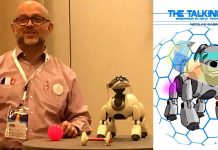

![The Incredible Growth of Fintech [Infographic]](http://ipfconline.fr/blog/wp-content/uploads/2018/02/31-01-2018-growth-of-fintech-1-218x150.jpg)
![FINE LIST OF 50 TOP WORLD BIG DATA EXPERTS TO FOLLOW IN 2017 [WITH MOZ SOCIAL SCORE]](http://ipfconline.fr/blog/wp-content/uploads/2017/05/Capture0000001ALTERN-218x150.jpg)

![FINE LIST OF 30 TOP WORLD INSURTECH EXPERTS TO FOLLOW IN 2017 [WITH MOZ SOCIAL SCORE]](http://ipfconline.fr/blog/wp-content/uploads/2017/05/hgfhfh1-218x150.jpg)



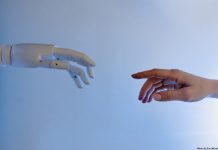



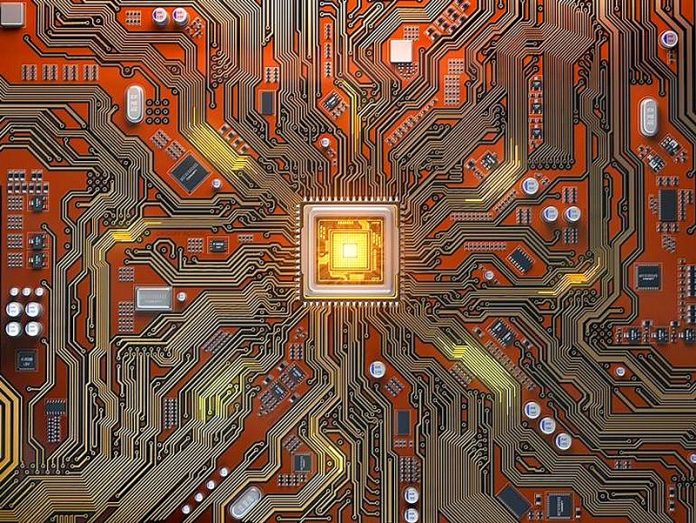
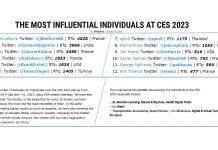







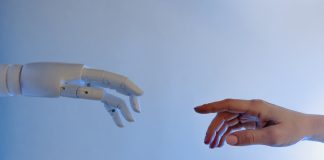
Exellent article! =D
Amazing blog! Do you have any hints for aspiring writers?
I’m hoping to start my own site soon but I’m a little lost
on everything. Would you advise starting with a free platform like WordPress or go for a paid option? There are so many choices
out there that I’m completely overwhelmed .. Any ideas? Thank you!
“Hey there superb blog! Does running a blog similar to this require
a massive amount work? I have very little understanding of programming but I was hoping
to start my own blog soon. Anyhow, if you have any suggestions or tips for new blog
owners please share”
Very good web page, thank oneself for the exciting material for guaranteed I am going to be back.
What i don’t realize is actually how you’re no longer actually a lot more smartly-liked than you might be now. You’re very intelligent. You recognize therefore considerably on the subject of this matter, made me personally consider it from a lot of varied angles. Its like women and men aren’t fascinated unless it’s something to do with Lady gaga! Your personal stuffs nice. Always handle it up!
Wonderful post! We are linking to this great article on our site. Keep up the great writing.
After reading your article feeling more confident and energetic, thanks for your example which you describing inside article, today is my first visit onyour blog and here i read some informative article, great article..
Spot on with this write-up, I truly think this website needs
far more attention. I’ll probably be returning to see more, thanks for the information!
Nice post. I was checking constantly this blog and I am impressed! Very useful info specifically the last part 🙂 I care for such info a lot. I was looking for this particular info for a long time. Thank you and good luck
“Hello! Would you mind if I share your blog with my
myspace group? There’s a lot of people that I think would really appreciate your content.
Please let me know. Many thanks”
Ok, thanks.
“hello!,I really like your writing so so much!
percentage we keep up a correspondence more approximately your
post on AOL? I need a specialist on this space to solve my problem.
May be that’s you! Taking a look forward to see you.”
Really rather interesting web-site. Incredibly pleasant in the direction of go through and Really considerably fascinating content material. Of course period incorporates not still occur back again and greet.
I was just looking for this info for a while. After 6 hours of continuous Googleing, finally I got it in your web site. I wonder what’s the lack of Google strategy that do not rank this type of informative websites in top of the list. Generally the top web sites are full of garbage.
“Hi there! I could have sworn I’ve been to this site before but
after browsing through some of the articles I realized it’s new to me.
Anyhow, I’m certainly pleased I came across it and I’ll
be bookmarking it and checking back regularly!”
I’ve been browsing online more than three hours today, yet I never found any interesting article like yours. It’s pretty worth enough for me. Personally, if all website owners and bloggers made good content as you did, the internet will be a lot more useful than ever before
It’s actually a great and helpful piece of information. I’m satisfied that you shared this useful info with us.
Please stay us informed like this. Thank you for sharing.